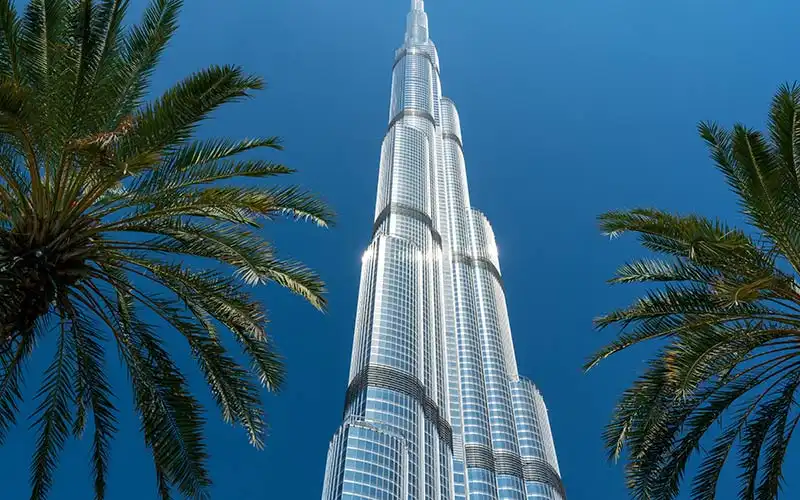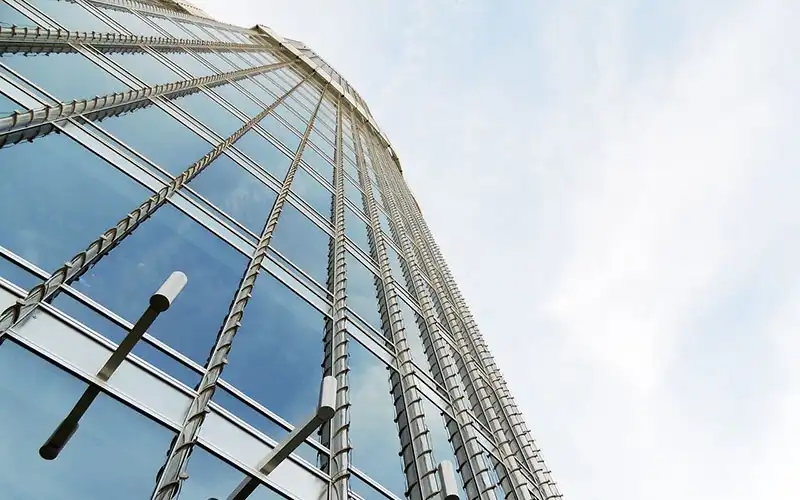A record-breaking masterpiece of up to date engineering, Burj Khalifa is equally distinguished for its design brilliance and green invention. With its eco-smart features woven into the framework, this skyscraper exemplifies how sustainability meets opulence. In the likes of water conservation, eco-efficient tactics, and more, this massive tower champions sustainability.
Sustainability Features of Burj Khalifa: Innovations in Eco-Friendly Engineering

At its core, the distinguished Burj Khalifa sustainability merges power-efficient installations, clever design, and exquisite green tech solutions. The eco-conscious skyscraper inspires amend by redefining extravagance with incredible sustainable patterns. Burj Khalifa’s prestigious, efficient design is guided by universal green standards. In short, it epitomizes present day green architecture.
Khalifa’s Energy-Efficient Components
Burj Khalifa integrates absolute energy-efficiency solutions from optimized insulation to heat-resistant glazing and automatic LED illumination. The thermal comfort is aptly maximized by an incredible centralized chiller unit. Such green systems by diminishing power utilization affirm its aim in shrinking carbon emissions and pledging sustainable features.
Khalifa’s Water Conservation Leadership
Burj Khalifa water systems devised precisely for efficiency features low-flow fixtures for curtailing water waste. Reclaimed water equally supports climate control as well as irrigation, aided via an exquisite rooftop mechanism to gather and repurpose rainwater. Such integrated sustainability features of Burj Khalifa curb consumption of water and minimal strain on city supplies.
Conscious Use at the Khalifa of Eco-Responsible Resources

Through top-notch eco-friendly materials in the likes of solar-friendly glass to recycled cement, the colossal structure shrinks carbon output. Materials obtained locally lessen transport-related pollution, thus reinforcing sustainability efforts and illustrating its pledge to lasting environmental care and sustainable commitment.
Carbon Neutrality Plan at the Burj Khalifa
By embracing eco-design, daylight-sensitive facades, VRF HVAC, and low-energy concepts, the Khalifa attains a favorable diminished carbon footprint. These function in unison in curbing ecological impact, ensure premier sustainability standards, and drive down energy needs.
Powering the Khalifa with Clean/Renewable Energy
The tower taps into exquisite renewable energy forms like wind as well as solar thus diverting from conventional energy. Such sustainability features of Burj Khalifa augment energy conservation, limit ecological effect, and open rooms for self-reliant, long-term energy model.
Sustainability Features of Burj Khalifa: Inside its Smart Building Excellence
The incredible smart building technology at the Khalifa is powered by real-time data which fine-tunes cooling, lighting, as well as heating. Energy conservation is enhanced further with a refined BMS that time and again analyzes and also adjusts the environmental parameters all through the immense interior. By optimizing operations in HVAC, lighting systems, and water the BMS lessens energy usage, reaffirming Burj Khalifa’s focus on smart, ecologically aware building performance. These inventions are amid the most inspiring sustainability features of Burj Khalifa.
Burj Khalifa’s Waste Sustainability Approach
Burj Khalifa illustrates its dedication to sustainability through a revolutionary sustainable waste management approach. Intended to minimize landfill inputs, the structure segregates waste at the very source, facilitating effective recycling of plastic, to paper and other products. The construction materials were preferred based on recyclability, also reducing environmental effect. Burj Khalifa Dubai further utilizes waste-to-energy technologies, which transform particular types of waste into useful energy. These recyclable initiatives complement the tower’s wider sustainability objectives and reinforce its status as a demonstration for green city living.
Burj Khalifa’s Advanced Air Purification & Ventilation

Having such high air quality in a building of this size is crucial, and Burj Khalifa ventilations systems are designed with sustainability at their very foundation. The tower incorporates sophisticated air filtering that eliminates pollutants & allergens, providing clean and healthy surroundings for everyone inside. The systems are also combined with finest energy-efficient HVAC that maximizes airflow, reduces power consumption, and ensures indoor comfort. These advancements encourage a healthier air quality while reducing the overall ecological footprint of the building.
Sustainability Features of Burj Khalifa: Alignment with Dubai City’s Vision
Burj Khalifa plays an imperative part in the agenda of Dubai sustainability. The giant structure along with exemplifying engineering and incredible design also aligns with the metropolis’ objectives to curtail its environmental effect and augment its green energy usage. In fact Dubai’s Vision 2021, the foremost aim of which was crafting an inventive and sustainable metropolis is replicated in Khalifa’s persistent dedication to green design & operations.
The Burj Khalifa is a beacon of how current day architecture can be not only awe-inspiring but also eco-friendly. Through the integration of energy-efficient approaches, Burj Khalifa green energy solutions, conservation techniques for water, and intelligent technologies, the structure helps Dubai achieve its vision to become a world head in sustainability. Acquire the Burj Khalifa tickets that are economically priced for varied viewing decks and levels. Early reservation is suggestive to secure the finest time slots and observations.
 Featured
Featured
 Featured
Featured
 Featured
Featured
Conclusion
The Burj Khalifa raises the bar of incorporating sustainable design in monumental city-scale developments. In its architectural innovations and embracing environmental practices, the building opened the door for higher standards for skyscraper developments. Its most modern technologies in power consumption, saving measures, conservation measures for water, and other intelligent building options have proven that one can safeguard the environment alongside creating architectural scale monuments. One of the most prominent Burj Khalifa facts indeed is how it manages to balance opulence and sustainability, turning it into an international figure of green innovation.
As Dubai itself prolongs to advance and develop, Burj Khalifa will still be an illustration of what is achievable when sustainability & technology merge. Its ability to impact future urban development as well as helping Dubai cater to its sustainability targets will continue to serve as a motivation to generations to come of engineers, architects, & environmentalists. In a comparison of the splendid Eiffel Tower vs Burj Khalifa, it is clear that although both constructions are engineering feats of their time, the Khalifa is noteworthy for the incorporation of forward-looking sustainability design elements in present-day skyscraper construction.
FAQs
Q1. How does the tower at the Khalifa aid in contributing to sustainability?
Q2. How are the Khalifa’s floors and interior crafted considering sustainability?
Q3. List the Khalifa’s varied sustainable construction practices.
- Low-carbon construction approaches
- Reflective glass
- High-performance insulation
- Recycled materials
